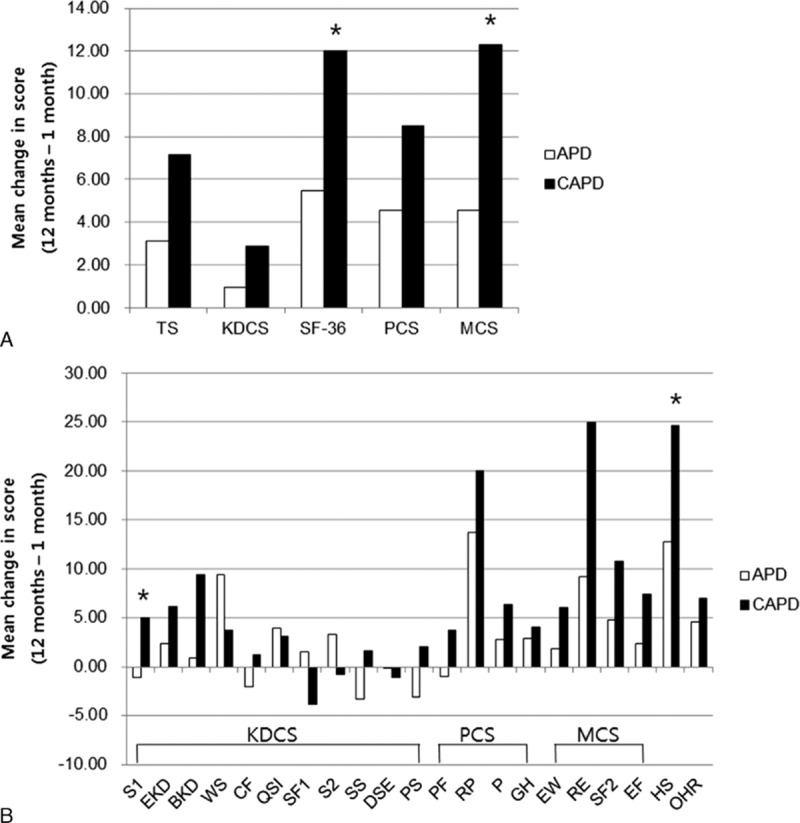FIGURE 1.

Mean changes in health-related quality of life scores from 1 to 12 months after starting therapy in propensity score-matched peritoneal dialysis patients. CAPD patients showed significantly greater improvement over time than APD patients in SF-36 scores, especially in MCS (A) and in the domains “symptoms” and “self-assessment regarding health status compared to 1 year ago” (b). APD = automated peritoneal dialysis, BKD = burden of kidney disease, CAPD = continuous ambulatory peritoneal dialysis, CF = cognitive function, DSE = dialysis staff, EF = energy/fatigue, EKD = effects of kidney disease, EW = emotional well-being, GH = general health, HS = health status compared to 1-year ago, KDCS = kidney disease composite summary; encouragement, MCS = mental composite summary, OHR = overall health rate, P = pain, PCS = physical composite summary, PF = physical functioning, PS = patient satisfaction, QSI = quality of social interaction, RE = role-emotional, RP = role-physical, S1 = symptom, S2 = sleep, SF1 = sexual function, SF2 = social function, SF-36 = short form-36, SS = social support, TS = total scores, WS = work status. ∗P < 0.05 vs APD in the mean change of score.
